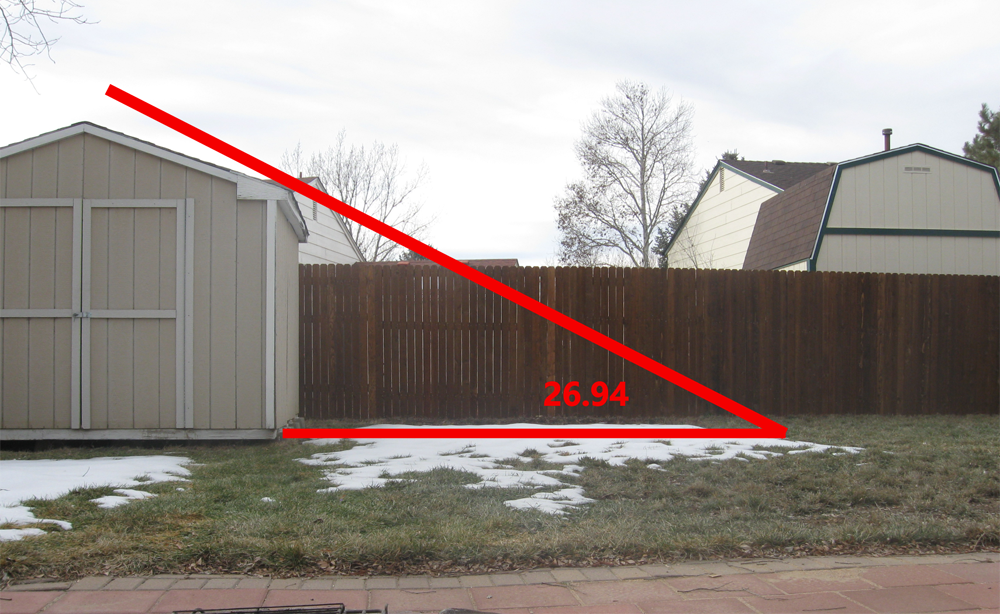
Solstices
From the Astronomical League Astronomy Before the Telescope observing program page:
11. Measuring: Solstices - Solstices were very important for ancient cultures. Measure the Sun’s altitude as it crosses the meridian on the solstices using a gnomon. Particularly for the winter solstice weather may be an issue. Luckily enough the equation of time isn’t very different for a few days on either side of it you can do the measurements anytime within the week. Do you notice anything about the difference between the two elevations?
December 25, 2019 -- Bennett, Colorado I celebrated Christmas day with friends and family in Bennett. I went outside on the balcony for a breath of fresh air. The patch of snow in the back yard caught my attention. That snow has been hanging around since before Thanksgiving just refusing to melt. It made a nice square with a pretty straight, sharp line along the northern edge. Evidently the low hanging Winter sunlight was being shadowed by the shed. That got me thinking.

I went down to the yard and took an edge-on photo of the shed and the snow patch. I went to Stellarium and found the transit altitude of the Sun from Bennett on the Solstice, a few days earlier: 26.9387o. I dumped the photo into a graphics editing program. I then constructed a 26.94o angle and superimposed it over the picture. This was kind of reverse engineered. I looked up the expected elevation angle and compared it to the results. I could have used the picture to make a rough estimate without consulting Stellarium.

June 8, 2020
Having completed the analemma for The Equation of Time activity, I was able to calculate the Solar altitude at the Summer and Winter solstices. The analemma is a gnomon based device. Details on these measurements and calculations can be found on that page. Here are the results:
| Solar Transit Altitude | Predicted by Stellarium | Calculated with Analemma |
| Winter Solstice | 26.9o | 27.8o |
| Summer Solstice | 73.8o | 73.7o |
The angle (altitude, elevation) of the Sun to the horizon is much lower in the Winter than in the Summer.